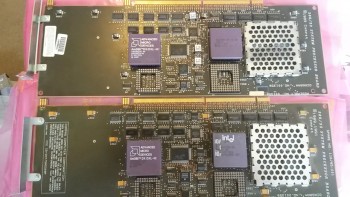First post, by tikoellner
- Rank
- Member
I was lately looking for some 386 board. Not just any board, but something special.
There are lot of those highly integrated baby AT boards with soldered CPU around for sale. But finding something higher-end and non-proprietary seems like a challenge, at least where I live.
I have lately acquired an UNISYS PW2 800 motherboard. Quite a beast with Intel 385 cache controller, 387 co-processor and early ZYMOS chipset. I was thinking of using it in an actual build, but as the board was a regular AT standard, it also had some proprietary features (BIOS, strange slot, etc.). Those features are great when you have a whole computer, but to me they are also annoying when building a clone is considered. The board runs on I386DX-20 CPU. I also could not find any documentation and there are lots of jumpers and switches I cannot decipher.
Now I think I encountered something that will finally meet my expectations: high-end yet not proprietary in any respect. The board was made by Micronics. It uses i386 DX-33 CPU along with i385 and i387 corpocessor. 64KB cache and 4MB ram, expandable with the additional memory card. Every of the chips mentioned still has genuine Micronics seals.
Can't wait to lay my hands on it. For now I will look for some documentation, hoping it just works.


